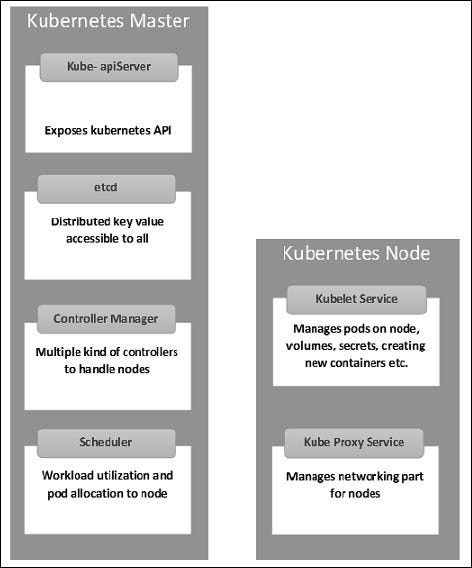OpenShift: Red Hat's Cloud Development Powerhouse
 Sandeep Kale
Sandeep KaleTable of contents

OpenShift is a cloud development Platform as a Service (PaaS) developed by Red Hat. It is an open source development platform, which enables the developers to develop and deploy their applications on cloud infrastructure. It is very helpful in developing cloud-enabled services.
OpenShift Container Platform brings together Docker and Kubernetes, and provides an API to manage these services. OpenShift Container Platform allows you to create and manage containers.
✴️Why we use OpenShift?
Containers are standalone processes that run within their own environment, independent of operating system and the underlying infrastructure. OpenShift helps you to develop, deploy, and manage container-based applications. It provides you with a self-service platform to create, modify, and deploy applications on demand, thus enabling faster development and release life cycles.
✴️Architecture

OpenShift v3 is a layered system designed to expose underlying Docker-formatted container image and Kubernetes concepts as accurately as possible, with a focus on easy composition of applications by a developer. For example, install Ruby, push code, and add MySQL.
OpenShift Container Platform has a microservices-based architecture of smaller, decoupled units that work together. It runs on top of a Kubernetes cluster, with data about the objects stored in etcd, a reliable clustered key-value store. Those services are broken down by function:
REST APIs, which expose each of the core objects.
Controllers, which read those APIs, apply changes to other objects, and report status or write back to the object.
Users make calls to the REST API to change the state of the system. Controllers use the REST API to read the user’s desired state, and then try to bring the other parts of the system into sync. For example, when a user requests a build they create a “build” object. The build controller sees that a new build has been created, and runs a process on the cluster to perform that build. When the build completes, the controller updates the build object via the REST API and the user sees that their build is complete.
✴️Components of OpenShift
One of the key components of OpenShift architecture is to manage containerized infrastructure in Kubernetes. Kubernetes is responsible for Deployment and Management of infrastructure. In any Kubernetes cluster, we can have more than one master and multiple nodes, which ensures there is no point of failure in the setup.

✴️Kubernetes Master Machine Components
Etcd − It stores the configuration information, which can be used by each of the nodes in the cluster. It is a high availability key value store that can be distributed among multiple nodes. It should only be accessible by Kubernetes API server as it may have sensitive information. It is a distributed key value Store which is accessible to all.
API Server − Kubernetes is an API server which provides all the operation on cluster using the API. API server implements an interface which means different tools and libraries can readily communicate with it. A kubeconfig is a package along with the server side tools that can be used for communication. It exposes Kubernetes API”.
Controller Manager − This component is responsible for most of the collectors that regulate the state of the cluster and perform a task. It can be considered as a daemon which runs in a non-terminating loop and is responsible for collecting and sending information to API server. It works towards getting the shared state of the cluster and then make changes to bring the current status of the server to a desired state. The key controllers are replication controller, endpoint controller, namespace controller, and service account controller. The controller manager runs different kind of controllers to handle nodes, endpoint, etc.
Scheduler − It is a key component of Kubernetes master. It is a service in master which is responsible for distributing the workload. It is responsible for tracking the utilization of working load on cluster nodes and then placing the workload on which resources are available and accepting the workload. In other words, this is the mechanism responsible for allocating pods to available nodes. The scheduler is responsible for workload utilization and allocating a pod to a new node.
✴️Kubernetes Node Components
Following are the key components of the Node server, which are necessary to communicate with the Kubernetes master.
Docker − The first requirement of each node is Docker which helps in running the encapsulated application containers in a relatively isolated but lightweight operating environment.
Kubelet Service − This is a small service in each node, which is responsible for relaying information to and from the control plane service. It interacts with etcd store to read the configuration details and Wright values. This communicates with the master component to receive commands and work. The kubelet process then assumes responsibility for maintaining the state of work and the node server. It manages network rules, port forwarding, etc.
Kubernetes Proxy Service − This is a proxy service which runs on each node and helps in making the services available to the external host. It helps in forwarding the request to correct containers. Kubernetes Proxy Service is capable of carrying out primitive load balancing. It makes sure that the networking environment is predictable and accessible but at the same time it is isolated as well. It manages pods on node, volumes, secrets, creating new containers health checkup, etc.
✴️What Are the Layers in OpenShift?
The Docker service provides the abstraction for packaging and creating Linux-based, lightweight container images. Kubernetes provides the cluster management and orchestrates containers on multiple hosts.
OpenShift Container Platform adds:
Source code management, builds, and deployments for developers
Managing and promoting images at scale as they flow through your system
Application management at scale
Team and user tracking for organizing a large developer organization
Networking infrastructure that supports the cluster
✴️How OpenShift works?
Openshift is a layering system where each layer is attached to the other using Kubernetes and Docker cluster. It helps in managing the containers which are hosted on the top of Kubernetes. This container can be any application servers or databases. The container holds the lightweight Linux system and Kubernetes support and manages the container orchestrion, and OpenShift manages the launched application from development to deployment with automation.
Kubernetes manages the container, and Openshift adds more security to it, and it also provides monitoring which Kubernetes doesn’t. It also helps in self-service provisioning, where Openshift will automate everything. OpenShift can also connect with other tools and help implement more features and wide development using the tools.
Features and Benefits of OpenShift
Innovate and go to market faster : OpenShift enables your development team to focus on doing what they do best — designing and testing applications. When they are freed from spending excessive time managing and deploying containers, they can speed up the development process and get products to market more rapidly.
Accelerate application development : Deploying and managing containers at scale is a complicated process. OpenShift enables efficient container orchestration, allowing rapid container provisioning, deploying, scaling, and management. The tool enhances the DevOps process by streamlining and automating the container management process. Cutting down on time that would otherwise be spent managing containers improves your company’s productivity and speeds up application development.
Enterprise-grade, container-based platform with no vendor lock-in : Consider the case of a company with worldwide manufacturing facilities that implements a proprietary container platform tool. If the company shifts its production approach to a process that requires it to change to a new operating system — one that isn’t supported by its containerization platform — the company will face the expensive task of redoing its containerization orchestration on another platform.
Self-service provisioning : This self-service provisioning helps improve developer productivity by allowing your development team to work with the tools they are most comfortable using — speeding up the development process by enabling faster creation and deployment of applications. At the same time, OpenShift allows your operations staff to retain control over the environment as a whole.
Secure Built : We are using the software or a RedHat product, which is best known for its security, so we don’t need to worry about security as we can build our application with OpenShift. It includes long-term enterprise support from one of the leading Kubernetes contributors and open-source software companies.
Code and Push : With openshift, it is straightforward to develop. The developer needs to code and push to any SCM tool where the Openshift program will automatically handle and manage all the middle work as programmed. It will be integrated with a different tool to provide all the requirements until the deployment.
Conclusion
So that's what OpenShift and how it works, and its benefits. I have also covered how industries have been using OpenShift and how they are benefited from this. OpenShift offers more to the developers and organization.
Subscribe to my newsletter
Read articles from Sandeep Kale directly inside your inbox. Subscribe to the newsletter, and don't miss out.
Written by
